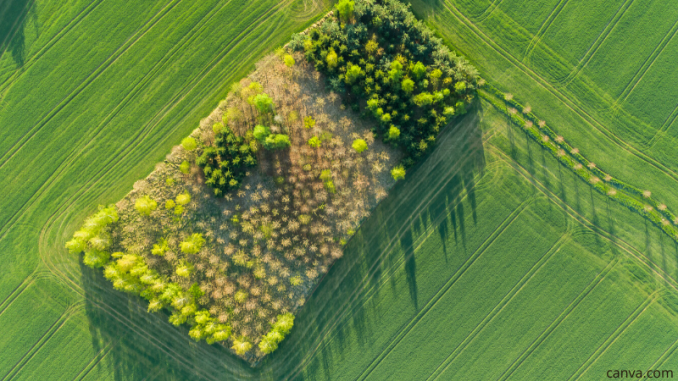
Few people realize how their food comfort zone is shrinking. Where we are now is the starting point for an ecologically and biologically-based agricultural revolution. And it starts with the soil. We must adopt an ecosystem approach to identify sustainable food systems that can exist within our planet’s boundaries, argues Stuart Meikle in the first of a four-part series.
This essay does not claim to be definitive but it is written after years of research and observation and thought, assessed with decades of relevant experience. It aims to highlight the direction of travel needed towards, and to stimulate discussion around, what sustainable food systems will begin to look like a few years down the line.
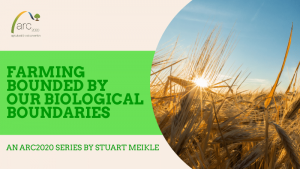
Setting the scene
The 2020s will be a decade of substantial directional change for agriculture. The immediate post-war decade ushered in the last major food systems shift and we should expect no less a magnitude of change now.
Fortuitously, given the food situation in Europe 75 years ago, the Green Revolution was getting into full swing. The plant breeding, the fertilizers, the pesticides, and the skills needed to exploit them moved Europe from an era of scarcity to one of abundance, affordability, food waste, and even the burning of food as biofuel. Food security is of little concern to the majority, albeit that perception does not reflect the true cost of our food.
Apparently, few people realize how their food comfort zone is shrinking. We read of climate change and we read of biodiversity loss. And we hear about agriculture’s pollution of air and water. We know that some regulations are removing some of the tools of the Green Revolution and that Mother Nature herself is also resisting them. And artificial fertilizers are finite, be they made with scarce, polluting, emitting fossil fuels. This is where we actually are now, and it is the starting point for an ecologically and biologically-based agricultural revolution.
It is against this backdrop that this essay is written. We need a transformational shift in our thinking about what sustainable food systems are. We have to find the answers within the context of all of the above, not just a few, vocalized issues alone.
Without question, sustainable food systems are complex and identifying them needs the multi-disciplinary thinking that is no longer common in a world of the specialist.
Sustainable food systems must work with nature, period. Nature, in past days, without us, produced abundance and we now need to tailor that capacity to fulfil our own needs, albeit this time around we must allow nature to continuously regenerate itself.
Numerous food systems will become recognized. They will be adapted for climate, location, resource availability and culture. Many will be high-tech, many not. Common to all will be the effective utilization of plant nutrients, albeit some will be unable to generate their nutrients from the soil beneath them. Those will be ‘sustainable’ in so far as they efficiently cycle nutrients and use renewable energy to replace those that are inevitably lost. Thus, the focus of this essay is the broadacre systems that will be needed to feed the billions, not the wealthier few.
In the writing of this essay, there is a return to the composing of agricultural policy using first the accumulated knowledge and experience of practitioners.
Policy, like food production, must be rooted in the soil.
It is written with a realization that when crises dictate action and dynamic change becomes a necessity, the extrapolation of what has immediately gone before will not provide a vision of the future. With the various systemic issues now linked to the technologies of the mid-to-late 20th century, such is where we in agriculture now find ourselves.
The next generation of agricultural systems must produce a multitude of solutions and they must be assessed accordingly. And developing them is a task made more difficult after decades of research dedicated to using our imposed tools rather than how we fulfil our needs using naturally-regenerating and ecologically-sound systems.
Defining sustainable food systems is a work in progress but we must start to make the calls now; we cannot wait for the evidence to catch up. Time is of the essence and we are addressing complex issues not well suited to the strictures of research methodology. Food systems are interdisciplinary.
Time is short and decision-making can no longer be postponed, so we have to move beyond step-by-step thinking to define a way forwards, not least because that very thinking can be rooted in the problems of the immediate past, not the solutions of the future.
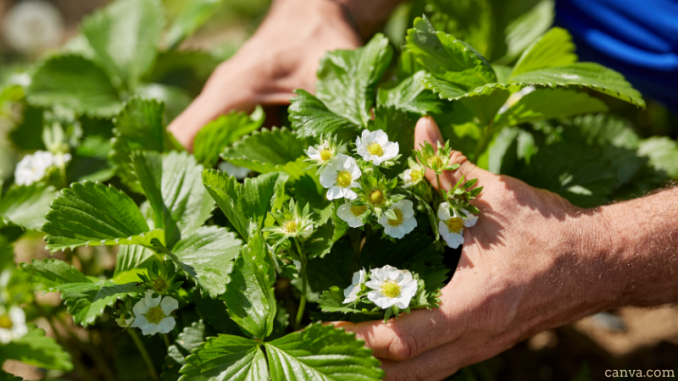
Defining sustainable food systems
Ultimately, this essay is about defining sustainable food systems. There is no single answer as local climate, topography and soils dictate so much. And cultural influences play a part. Emerging, nonetheless, are principles common to all; paramount of which is that they are founded upon plant nutrition and the ability of the system to replace, or in the now common vernacular, to regenerate, the plant nutrients consumed.
We do not lose plant nutrients, but what we fail to recycle is lost to our food systems, and therein lies the crux of the matter. We eat, we wear fibres, we burn biomass, but we rarely consider the alacrity with which we use and lose plant nutrients.
In times past, successful societies achieved an equilibrium with plant nutrition. Their populaces were fewer and closer to the land that fed them. Even then, societies that failed to protect their soils collapsed.
In our own epoch we have become divorced from the land that feeds us and we have divorced plant nutrition from nature. We have seen a century of success, if gauged by population growth alone. It has come at an environmental cost and ushered in the widespread ecosystem failure that has displaced other species. We have taken the resources that feed them for our own, and when we had consumed those, we invented our own ‘solutions’ to replace them.
Sadly, we are now realizing that the environmental costs and resource consumption footprints of those solutions render them finite. We have consumed the soil carbon that sustains the biological life of our soils. It is the very life that sustains all living creatures, humans inclusive. While soil carbon loss is becoming recognized, less so is how finite are the plant nutrient sources that have enabled billions more humans to live on our bounded planet.
The history of guano tells us that we have long since found ways to outgrow the natural ability of our locality to sustain us.
For a century we have used fossil fuels to convert atmospheric nitrogen into a convenient artificial fertilizer. We have used more fossil fuels to mine eventually finite phosphates and potash, replacing biogenic nutrients with geophysical ones. Their sourcing and application both pollute and emit. They disturb and shock the rhythms of nature, the very rhythms which have fed the mass of the species that went before us.
The word finite will appear again and again as it is these plant nutrients that define the boundaries of sustainability. We have forgotten such for three-quarters of a century, and we have imperilled our food systems in doing so.
Sustainable food systems are defined by plant nutrition. As the era of fossil fuels and readily accessible artificial fertilizers moves into history, we must now address how we feed the human race’s billions.
Where do we go on a planet now becoming devoid of virgin territory? We thought the days of slash and burn were found within the pages of history books, but no, not quite. We still seek out fresh lands, resplendent, briefly, with fresh, available, soil carbon, nitrogen, phosphorus and potassium. And swiftly we degrade them.
We have nowhere to go, but still we want land to feed, clothe and power our societies. We are on a road to nowhere, and without a roadmap.
Ultimately, our destination is one where we again live within boundaries defined by the ecosystem. We must learn how those ecosystems can function to feed, to clothe, and, in part, to fuel our society.
Such ecosystems will be numerous and location specific. They must be able to regenerate what we take from them. It will be all about nutrient offtake and sympathetically managing nature to replace those nutrients. Such starts in the soil and with its biome.
As artificial plant nutrients become scarce, we must transition towards, again, relying upon nature’s systems. That in itself will be difficult after decades of believing that we can dominate nature, no matter what.
Thankfully, such an approach will force us to share the ecosystems we inhabit. All biodiversity is founded in the soil and by relearning how to respect and nurture that soil we will enable nature to feed far more than ourselves.
As a society we have no choice but to change, but first we must recognize that we will only ever survive within a living, functioning ecosystem. We must appreciate that we are no greater than all the other myriad organisms necessary to ensure that the ecosystem functions to regenerate what we, the human species, desire to consume.

What has to be addressed by farmers
As a society we are facing a climate change crisis and a biodiversity crisis simultaneously. They are, nonetheless, not the entirety of the difficulties facing our farmers, a number of which, if left unaddressed, will threaten our future food security. A list of headline objectives for farmers is therefore presented below:
- alleviating climate change by targeting zero fossil-fuel carbon emissions
- working within regulatory constraints imposed upon all GHG emissions
- stopping atmospheric and aquatic environment pollution from farming
- re-establishing the biodiversity whose habitat has become farmed land
Less well publicised but, from a food producing perspective, serious issues are:
- reversing soil degradation and the widespread fall in soil-biome health
- ensuring that all our soils are protected from degradation by vegetation
- rebuilding pollinator and critical-to-food-production insect populations
- nature’s resistance to conventional agriculture’s solutions is increasing
- human health care must not be compromised by farm antibiotic usage
- customer demand and farmer desire for ever-enhanced animal welfare
- upstream farms will have to act as water catchments for flood control
Nonetheless, even when the above issues are alleviated, we must still address:
- our reliance upon fossil fuels for manufacturing and mining fertilizers
- mined phosphate and potash supplies are finite and inefficiently used
- energy for food will be of rising concern as fossil-fuel supplies dwindle

Plant nutrients will define the ecosystem’s boundaries
As fossil fuel access declines through absolute availability and/or regulation to alleviate pollution and emissions, we will have to return to basing our lives upon utilizing recently grown plant-based, built-upon-carbon materials.
It will be about the ‘bioeconomy’, a newly coined expression for how pre-industrial societies used to operate. The future will be about the production, use and circulation of plant cellulose, or specifically, the carbon therein.
Nutrition for plant growth is, nonetheless, more than about harvesting free atmospheric carbon to fuel cellulose accumulation. Plants require nitrogen, phosphorus, potassium and a complex of micronutrients. They have to be found from somewhere.
Nature sources nitrogen from the atmosphere where it is in abundance. The rest it has derived from soil and the soil biome. Humans, nonetheless, learnt how to expedite plant growth by creating and mining ‘artificial’ nutrients using fossil fuels to substitute for complex-to-access naturally-sourced nutrients.
With fossil fuel reserves in decline, it is to the latter that we will have to turn and it will be the supply of these biogenic plant nutrients that will define the edges of our modern-day, bioeconomy’s consumption boundaries.
Hence, plant nutrients should be divided into those sourced naturally, directly or indirectly, from the atmosphere or soil profile, and those derived through humans using fossil fuels. The latter includes nitrogen from the Haber-Bosch process and mined phosphates and potash.
A well-known characteristic of artificial plant nutrition is that the utilization of nutrients is low to very low and this results in atmospheric pollution and water contamination.
Our current farming systems take resource-expensive and likely finite plant nutrients and waste them with costly consequence, albeit the full costs are rarely attributed to the food, fibre or biofuel produced. This must change.
Nature has complex but still poorly understood systems to source and circulate plant nutrients, albeit it is likely that the functionality of these systems is inhibited when easy-to-access artificial nutrients are offered.
In the future food, fibre and biofuel systems will need to be focused upon how we can encourage Nature to source and cycle plant nutrients. The caveat is then that we have to minimize fossil-fuelled human interventions used to drive nutrient cycles. We will use truly renewable energy for such activities but they will thus be constrained.
As we well know, plant growth can be stimulated with artificial nitrogen and that secures atmospheric carbon, but to what degree is that carbon naturally-sourced? Phosphates can be recycled from manure and sewage, but it often needs fossil fuels.
Hence, it is about identifying systems that use the minimum of fossil fuel or, later on, bioenergy. Conceptually it is easy, but in practice it is far from it. Nonetheless, it is a road that we have to travel.
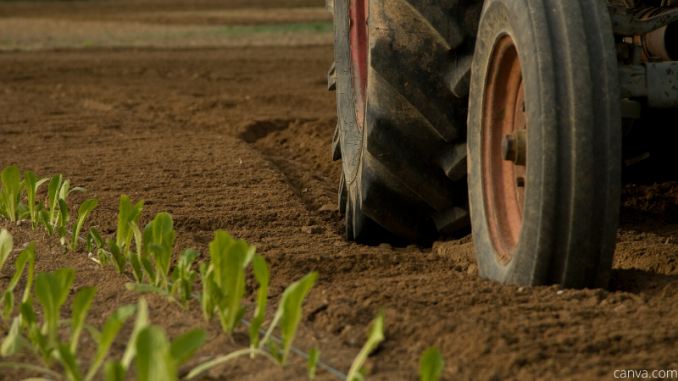
Farming plant nutrients to provide food security
All the aforementioned issues facing farming and food production can be addressed by system change, albeit each change will impact upon the quantity of food, fibre and fuel that can be produced.
It may be argued that the yield lost through system change is too great, that yields will decline from those currently achieved, but the question should be couched in terms of what yields will be achieved, business as usual, versus system change?
If the current systems are faltering due to, for example, rising pathogen resistance, that influences the baseline against which system change should be measured. It is where we will be that counts, not what has gone before.
Absolute production is in itself an issue with both a growing global population and one that seeks to switch from fossil-fuel-based to plant-based consumption. Simply, the switch is not sustainable if total material consumption is not reduced. Plant-based derivatives are also finite.
Henceforward, to be specific, the absolute constraint is the nutrients needed to grow plant products, be they used for food, fibre and fuel. It will be how we negotiate this constraint that will dictate our successes with future food security, but the constraint is still below the radar.
If we accept that the principal constraint on future food supplies is the availability of plant nutrients, what does a sustainable food system sufficient to provide food security look like?
The global population has quadrupled in the last century, a fact that has paralleled our use of, and now reliance on artificial fertilizers.
With questions over the geophysical availability and political access of phosphates and potassium, the fossil fuel dependency of nitrogen manufacturing and the mining of phosphates and potassium, not to mention the pollution and GHG emissions from their use, just how do we establish what a productive and sustainable food system looks like?
It is inevitable that dramatically improved utilization of artificial nutrients will have to occur, both when growing plants and with the recycling of nutrients, post plant-based product use.
Needless to say, offtake losses will still occur and we will need to find alternative ways to bring nitrogen, phosphate and potassium into plant growing systems, and with the minimum of renewable energy use. It is probable that adequate carbon will be available.
The answer will lie with understanding and utilizing how Nature creates abundance without human intervention.
Future farmers will require an insightful knowledge of how ecosystems work. It will be a seismic shift from the training many have had. Soil ecology will come to the fore.
And, with limited access to artificial fertilizers, farmers will have to manage an environment wherein plants and animals and soil microbial life function in harmony to source, share and circulate nutrients. This functioning ecosystem will be fuelled by solar energy, not fossil fuels.
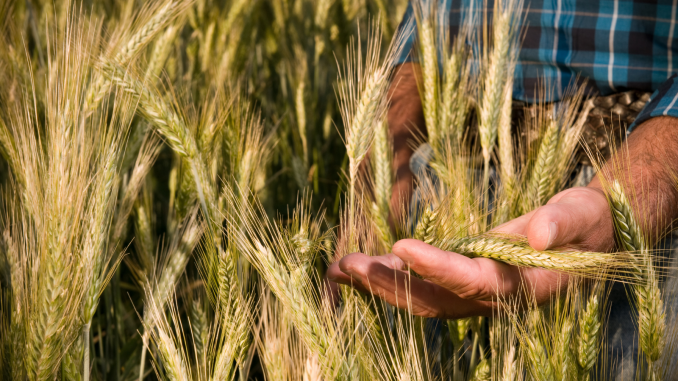
Viewing farms as solar energy collectors
Open-field farms should be regarded as solar energy collectors with the energy collected and accumulated being stored within both plants and the soil biome. The energy built up within the soil is from carbohydrates exuded by plants to feed the soil biome, partly in exchange for nutrients that they cannot access from ‘locked’ sources.
In addition, the solar energy harvested enables living plants to source nutrients from the atmosphere (carbon and nitrogen) and, as stated, the soil profile via the soil biome (phosphate, potassium and the trace elements).
The nutrients then become available for other organisms to harvest, humans included, although that availability may first require the circulating of nutrients through multifarious organisms first. Under certain circumstances, excess energy can be stored as sequestered carbon, or more importantly, in accumulated carbon-rich humus.
Nutrient sourcing, cycling and accessible storage (not carbon sequestration per se) functionality defines what is the soil fertility available to feed later, rotational crops (which may not be able to feed themselves). And more so when the latter are grown in isolation of the plant diversity that can feed them.
Such is the case with many direct-to-human consumption food crops. And, almost by definition, monocultures struggle to feed themselves.
As fossil-fuel-based artificial nutrients become scarce, the efficiency and scale of farmland solar collection and the functionality of the soil biome will be critical. They will supplant the fossil fuel energy and artificial fertilizers used to provide food, fibres and biofuel. And such, will only ever be supplemented by artificially-lit food systems.
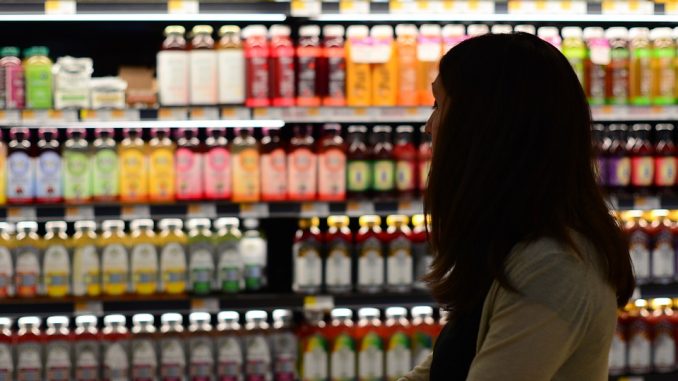
Recognizing what ‘offtake cropping’ is
With an increased awareness of artificial fertilizer scarcity, farm management thinking will focus upon what is being removed from the soil with each harvest.
That applies to what is removed for direct human consumption or to feed farm animals and birds. The degree of offtake being determined by how many of the residual nutrients can be returned to the soil from whence they came. The remainder will have to be supplied from the atmosphere and soil profile without using fossil fuels and the minimum of non-plant-nutrient-consuming renewable energy.
For the foreseeable future nutrient loss will also occur due to poor recycling of ‘wastes’ and inefficient utilization.
The latter will be greater where artificial fertilization occurs, as it inevitably will, albeit efficiency will be better where hydroponic and aquaponic type systems are used.
The urbanization of humans and many of the creatures that feed them, means that nutrient cycling back to the land that feeds them is near to impossible.
Thus, nutrient offtake for food, fibre and biofuels is inevitable and it must be regenerated by using a combination of plants, the soil biome, and solar energy working in harmony to source those nutrients from the soil profile and atmosphere.
It is a situation made worse by many of our traditional offtake crops being unable to source their own nitrogen, phosphorus and potassium, thus, making them dependent on the farmer building up soil fertility to feed them.
No doubt some could, but they would need to be grown within a system where tillage (and other shocks) are eliminated from the system to the degree that soil biome permanence allows the symbiosis between it and the plant to function.
That can only occur where the soil habitat around plant roots is stabilized to the point where bacteria can secure atmospheric nitrogen and fungi can source soil profile nutrients for the growing plant, all in exchange for root-exudated carbohydrates, the energy source for the aforementioned bacteria and fungi.
Sadly, many of our direct-for-human-use crop production systems do not enable the soil habitat permanence to exist.
In part two of this series, Stuart Meikle will explore regenerative agriculture and its capacity to replace plant nutrients.
More on sustainable food systems
Counting Apples or Oranges? | Climate Change Stats vs Food Systems Thinking
Recharging Soils with Carbon Could Make Farms More Productive
#SoilMatters Part 5 | Stuart Meikle on Soil, Ruminants & Sustainable Food
A More Resilient, Equitable & Inclusive Agricultural & Food System



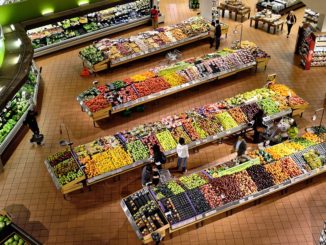
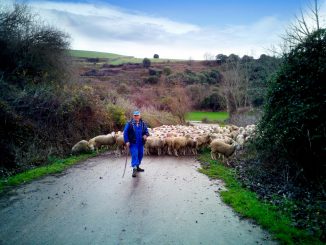
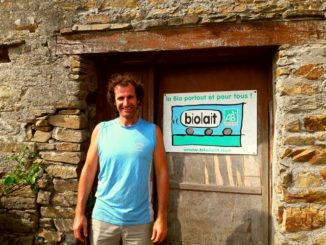
1 Trackback / Pingback
Comments are closed.